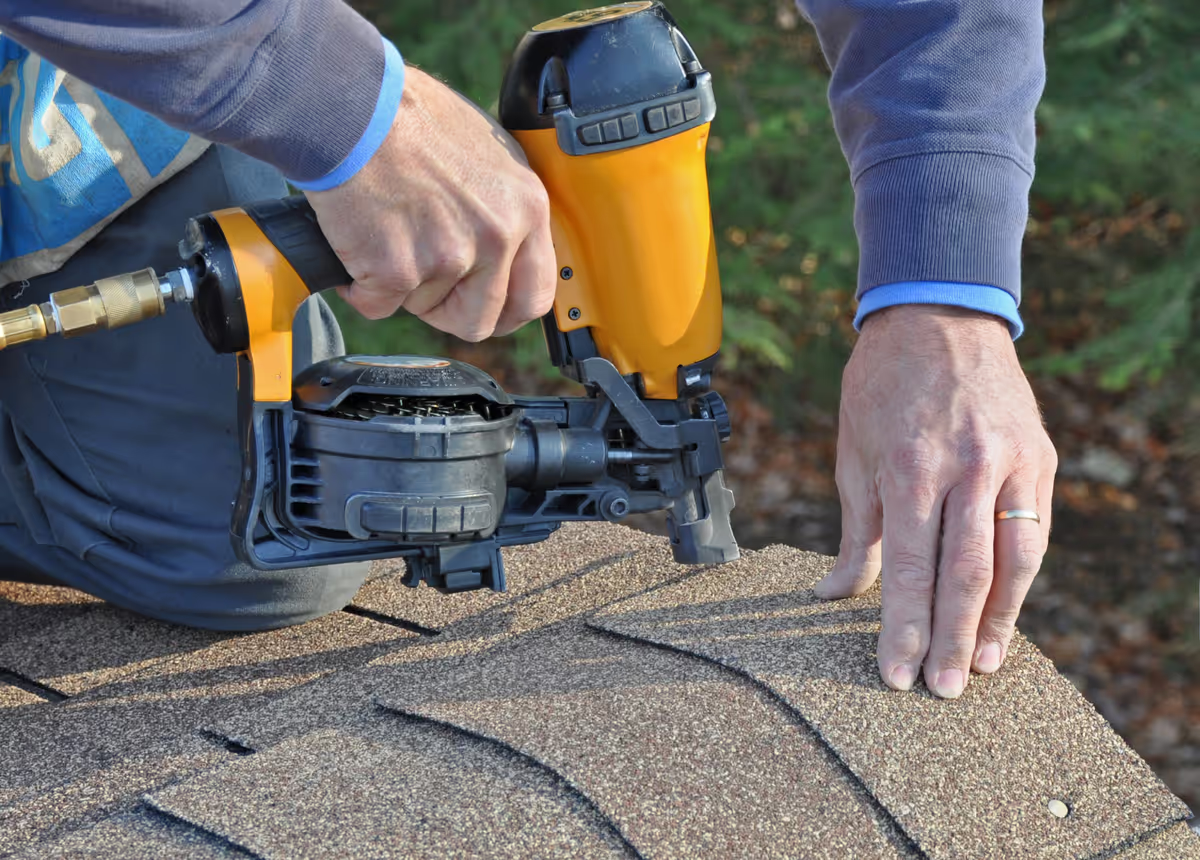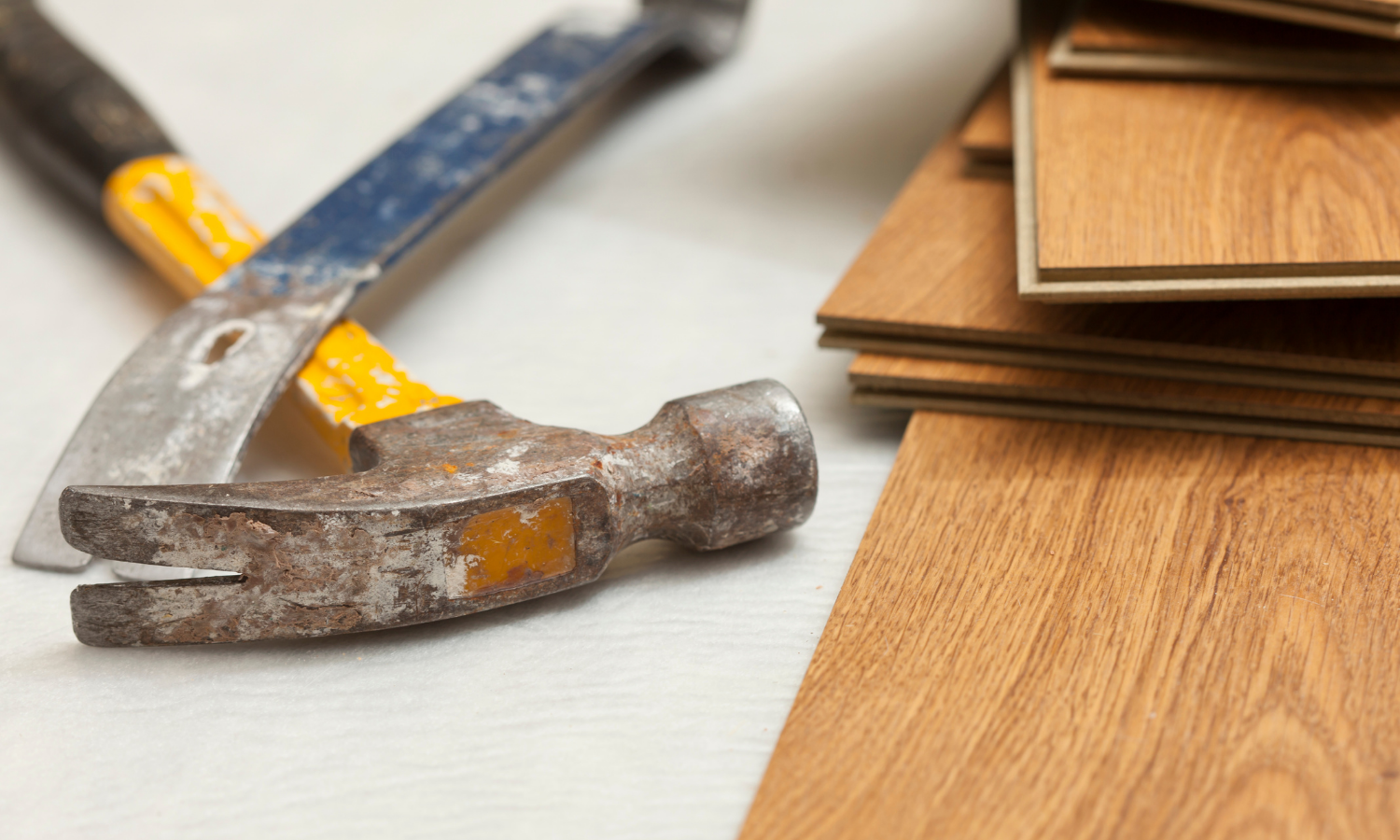Any roofer knows that having great tools is how you install great roofs. But when you’re the one running the business, providing reliable roofing safety gear and equipment is even more important.
The best roofing equipment protects your crew, speeds up jobs, and gets you happy customers. And we all know that happy customers are who refer you to their friends and family. To keep your team safe, productive, and efficient, don’t settle for less than the best.
Use this checklist to build a strong toolkit that supports your crew and your growing business.
Here’s why roofing safety gear and equipment matters
Reality is, investing in solid roofing equipment early pays off huge later. Even if your crew says they can make do with old tools, don’t take the easy way out. Proper roofing tools and equipment lead to faster, safer, better results.
Here’s how:
- Safety: Keep your crew protected from jobsite hazards.
- Productivity: Confident workers move quicker and with more precision.
- Reputation: Great tools lead to great work, which leads to satisfied customers.
- Profitability: Safe crews and less downtime mean more jobs done and fewer headaches.
In short: Your gear is an investment that pays off every day on the job.
Go above and beyond to make your crew feel safe. Aside from it being the right thing to do, unsafe roofers can’t and won’t do their best work. Workers will leave your company if they don’t feel like you value their health and safety.

How to choose the right roofing tools
You probably already have your go-to brands, maybe ones passed down from a mentor or picked up over time. The trick is to not let let brand loyalty hold you back from better options.
When choosing roofing equipment:
- Compare features: Look for safety upgrades, durability, and ease of use.
- Check warranties: A solid warranty means confidence in the product.
- Read reviews: Real-world feedback often reveals hidden pros and cons.
- Test ergonomics: If a tool feels good in the hand, it’s easier and safer to use.
- Ask your crew: Run it by your team — experience matters, and your installers will be happier if you let them choose the tools that work best for them.
Tip: Ergonomic design matters a lot more than it gets credit for. Tools that “feel right” reduce fatigue, improve accuracy, and lower the risk of injury.
Must-have roofing safety gear and equipment
Here’s the essential roof safety equipment every business should keep stocked. Whether you’re tackling residential or commercial projects, these are vital.
Safety Equipment (PPE)
Never start a job without it. Even the best crew needs the right protection.
- Safety glasses: Shield eyes from flying debris, nails, and dust.
- Harnesses & lanyards: These are vital on steep-slope or commercial jobs. Falls are the leading cause of roofing-related deaths, so don’t cut corners here.
- Non-slip boots: Specialty roofing shoes (or even skater shoes or flat sneakers) can save lives by stopping slips and falls on metal or wet surfaces.
- Gloves: Protect hands from sharp materials and increase grip.
Note: Working in the summer heat can be extra dangerous due to the risk of heatstroke or sunstroke. Read our summer safety tips for managing crews in hot weather.
Ladders
Whether you prefer basic ladders or aerial work platforms (AWPs), you’ll always want a good ladder on hand. Take proper time to choose the right ladder for each type of job.
One solid ladder should work for all different roof heights. Scope out your local neighborhoods to see what size of houses you’ll be working on most often. Look for a lightweight, durable fiberglass ladder with a decent extension length.
Look for:
- Fiberglass: This material is safer around electricity than aluminum.
- Enough length: Reach the right height without overextending.
- Stable footing & locking: Reduce risk of slipping or tipping.
When it comes to enforcing ladder safety protocols, don’t be afraid to be a pain in the ass about it with your crew. Most ladder accidents are preventable.
Utility Knives, Shears & Snips
For fast, accurate cutting of:
- Asphalt shingles
- Underlayment
- Metal panels
- Flashing
Don’t forget to:
- Choose knives that store extra blades.
- Keep shears and snips sharp (or get them sharpened often).
- Try pneumatic options for faster work, if you’ve got the compressor setup.

Claw Hammers & Pry Bars
Still essentials for tear-offs and detail work. There’s no replacing a good hammer.
- Claw hammers: Pick the right weight to balance power and control.
- Pry bars: Carry a mix of small and large sizes for flexibility.
A quality pry bar is your best friend in tight spots or when dealing with stubborn nails.
Roofing Nail Guns
Nail guns are one of the most-used tools in the biz, and can feel very personal for roofers. Don’t cheap out on these! You may even try a few out before finding the right fit.
Look for:
- Comfortable weight and grip.
- Adjustable depth settings.
- Safety lock features.
- A solid manufacturer warranty.
Not all nail guns are made equal, so test a few and see what works for your crew. They’ll feel the difference in speed and fatigue. You might want to let each installer choose their preferred brand, or let them buy their own tools and reimburse them, instead of providing everyone with the same nail gun.
A sequential-trip nail gun is safer (less likely to accidentally fire), but long-time roofers might prefer a contact-trip (or bump fire) nail gun. These are faster, but take more experience to use safely. Trust in your team and rely on their expertise to help make this call.
Remember, taking time to figure this out and set a standard now means lots of time saved later — it all adds up.
Compare top brands (from Bostitch to Senco) in our full nail gun guide for roofers.
Measuring Tools
Measure twice, cut once, right? Precision is everything. A sloppy layout can cost you big time.
- Chalk lines: Great for fast layout, but don’t rely on these only.
- Tape measures: Use ones with standout features like magnetic ends.
- Laser levels: Optional, but useful for framing or layout precision on larger projects.
Encourage your crew to double-check as they go. Even a small misalignment can add up over a long ridge. There’s nothing worse than laying a few rows of shingle and finding that you’re starting to slope!
Extra Tools Worth Having
You never regret having the right tool when you need it.
- Shovels: Great for pulling off old shingles, tear-off, and clearing debris.
- Caulk guns: Needed for sealants and adhesives.
- Socket sets: Useful for fastener work around trusses or metal components.
- Brushes & brooms: For cleanup, coatings, or touch-ups.
Build a setup that works for your jobs, but above all else, make sure it’s organized, safe, and efficient. Budgeting for a few extra tools now is a drop in the bucket to prevent accidents and work disruptions later.
Level up your business with the right tools
At the end of the day, the right roofing safety gear and equipment makes your business faster, safer, and more profitable. Better gear = better jobs = better reputation.
And while we’re on the topic… now that you’ve got your crew set up with the right tools, set yourself up for success too. You’ll need to be organized, and nail your speed to lead, to run your business efficiently.
Get the digital tools your roofing business needs
Roofr gives you the online tools to run your business smarter, all in one place:
- Win more leads with easy instant estimates and stunning proposals.
- Impress customers with measurement reports in as little as two hours.
- Save time with one-click material ordering and automations.
- Stay organized with our built-in CRM, calendar, and payments.
Thousands of roofers trust Roofr to help them save time, win jobs, and grow faster. Ready to join them?
After all, if your crew deserves the nicest tools, you do too.
Register for free and get a roof measurement report on us.


